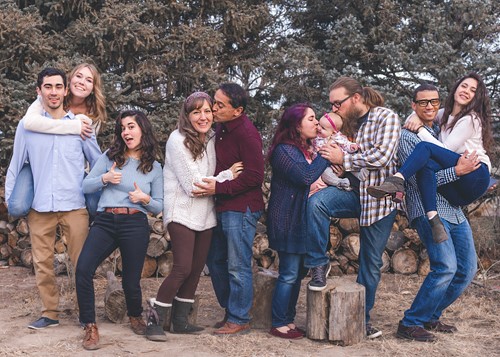
Photo by Craig Adderley from Pexels
Housing design has undergone significant changes in the past few decades, with open concepts and flexible living arrangements quickly taking over. Such designs reflect, in part, the increased prevalence of multi-generational families, in which family members of all ages live together.
During the Great Recession, the rise of multi-generational living largely stemmed from financial concerns. For years, young adults simply couldn't afford to move out. That has since changed, with low unemployment rates and a fast-paced housing market encouraging young buyers to invest in condominiums, townhouses, and single-family homes.
Despite recent housing developments, many young people still prefer to reside with close family members for purposes of convenience or family togetherness. This is particularly prominent in communities in which cultural norms dictate that young adults will continue to live with their elders long after they have completed their schooling, secured jobs, and even established long-term relationships or had children of their own. The close connections fostered by multi-generational arrangements are not nearly as easy to replicate elsewhere.
There's a lot to love about multi-generational living, but such arrangements can feel stifling in the wrong setting. Some houses simply aren't designed to accommodate anything beyond the nuclear family. Thankfully, creative construction is on the rise, with flexible solutions available to help families make the most of once unconventional setups. Key features worth seeking include:
Young adults often venture out on their own simply because they lack privacy. The right structures, however, can resolve this issue by emphasizing private spaces. For example, instead of including one master bedroom and several smaller rooms, such homes may feature multiple master bedrooms. Suites that resemble mini-apartments are even better, as they allow residents to spend entire days in private spaces if desired.
While privacy is critical in multi-generational homes, communal spaces are just as important. Families should enjoy the opportunity to regularly spend time together. Communal dining spaces, in particular, make it easy to build close connections in a festive atmosphere. Open concept communal spaces are especially popular, as they provide an open feel while also offering flexible space that can be adapted to accommodate evolving needs.
Today, the very homes that require extensive baby-proofing may also need accessible features that enhance mobility for seniors. While not necessarily incompatible, these considerations can be difficult to incorporate in the same space. Universal design principles such as level-entry showers and single-story homes make life easier for residents of all ages.
Today's diverse families and housing preferences call for a broader range of housing options. Cleverly designed multi-generational homes provide an excellent opportunity to accommodate a close-knit and valuable living arrangement that will only continue to grow in prevalence in years to come.

Robert J. Holbrook
Broker/Owner, Realtor™
Professional Designations: CLHMS, CRS, CMA, ALHS, GRI, CRLS, ABR, SRES, ePRO
Headquartered in Plano, Texas, Holbrook Realty serves families with their real estate needs in Texas (#538582), Oklahoma (#170585), Colorado (ER.100038767) and Washington (#27953). Robert Holbrook, the Broker at Holbrook Realty, is also a mortgage broker in Texas and Colorado (NMLS #305616, CO MLO100538188). This additional experience helps our customers navigate the home selling and buying process with confidence and ease.